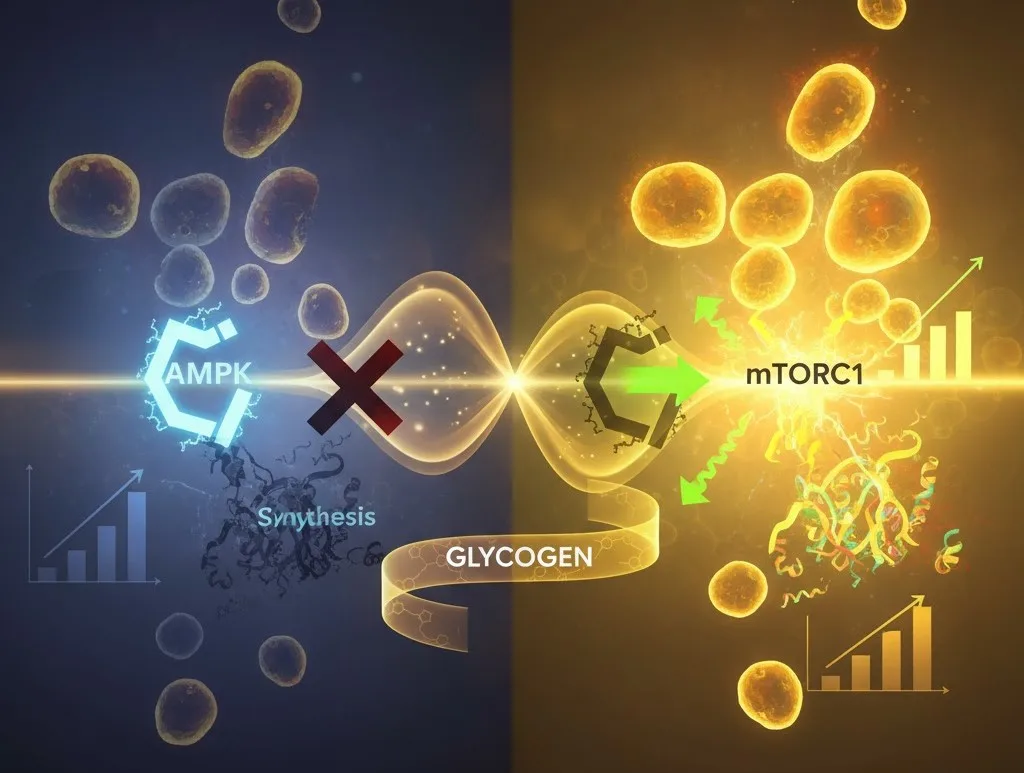For a long time, glycogen has been primarily understood as the body's principal storage form of glucose, serving as a readily available "fuel tank" for energy. However, recent insights, highlighted in a recent infographic, underscore a more sophisticated role for glycogen: it acts as a critical metabolic signaling molecule, orchestrating key cellular processes that dictate how a cell manages its energy and growth.
This dual function – both a fuel and a signal – is essential for maintaining cellular homeostasis and responding dynamically to changes in energy availability. The core of this signaling lies in glycogen's interaction with two pivotal cellular pathways: AMP-activated protein kinase (AMPK) and mammalian target of rapamycin complex 1 (mTORC1).
When Glycogen Levels Are Low: The Energy Conservation Mode
Imagine a cell facing an energy deficit. This is precisely the scenario when glycogen stores are depleted. In such circumstances, a cascade of events unfolds to conserve precious energy:
-
Decreased Cellular Energy: As glycogen, the readily accessible energy reserve, dwindles, the overall cellular energy level drops. This signals a state of energy scarcity.
-
AMPK Activation: Sensing this energy crisis, the AMP-activated protein kinase (AMPK) pathway springs into action. AMPK is a master regulator of energy metabolism, often referred to as the "energy sensor" of the cell.
-
mTORC1 Inhibition: Once activated, AMPK's primary response is to inhibit the mTORC1 pathway. mTORC1 is the main pathway responsible for promoting growth, protein synthesis, and other anabolic (building-up) processes, all of which are highly energy-intensive. By shutting down mTORC1, AMPK effectively prevents the cell from expending energy on these costly activities, prioritizing survival and energy conservation.
In essence, when fuel is scarce, glycogen's low levels signal AMPK to hit the brakes on growth and production, redirecting resources towards maintaining essential functions.
When Glycogen Levels Are High: The Growth and Building Mode
Conversely, when energy is abundant and glycogen stores are plentiful, the cellular machinery shifts into a mode of growth, repair, and synthesis.
-
Available Energy: High glycogen levels indicate that the cell has ample energy reserves. There's no immediate need for conservation; instead, resources can be allocated towards building and growing.
-
Decreased AMPK Activity: With plenty of energy, the "energy sensor" AMPK perceives no crisis and its activity naturally decreases. The cell no longer needs to be in conservation mode.
-
mTORC1 Activation: The decline in AMPK activity, coupled with high energy availability, allows the mTORC1 pathway to become active. Once mTORC1 is engaged, it stimulates protein synthesis, cell growth, and other anabolic processes. This is the cell's green light to expand, repair, and build new components.
The Interplay: A Symphony of Cellular Control
The interplay between glycogen levels, AMPK, and mTORC1 illustrates a sophisticated feedback loop that allows cells to finely tune their metabolic activities. Glycogen isn't merely a passive energy store; it's an active participant in signaling the cell's energy status, thereby dictating whether the cell should conserve energy and halt growth or utilize abundant energy to build and synthesize.
This understanding is crucial not only for fundamental cell biology but also has significant implications for various physiological states and diseases, including metabolic disorders, cancer, and the aging process. By recognizing glycogen as a metabolic signaling molecule, we gain deeper insights into the intricate mechanisms governing cellular life.

